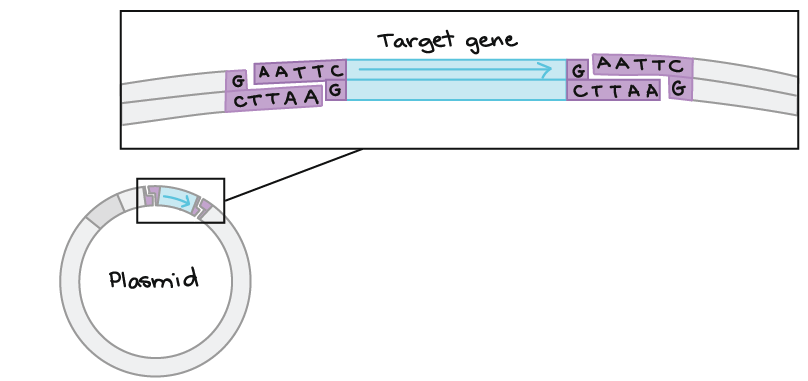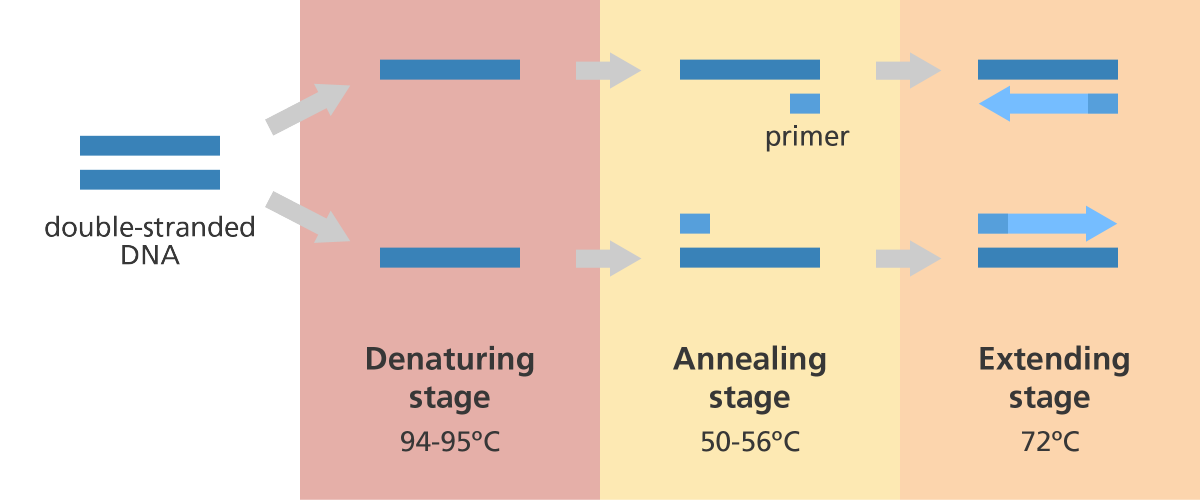Biotechnology
Biotechnology is the field in which biology is combined with engineering to produce real-life products. Biotechnology has been used to create a variety of things.
With biotechnology, scientists were able to create artificial recombinant DNA, which is DNA that consists of genes from different sources (such as from two different organisms). Recombinant DNA is naturally created during prophase of meiosis, viral transduction, and bacterial conjugation, but producing it artificially is a complicated process.
To create artificial recombinant DNA, restriction enzymes must be used. The restriction enzymes cut the DNA at specific DNA sites called restriction sites. Whenever the DNA is cut at these sites, a sticky end is formed.

When the DNA must be added to a plasmid, the plasmid DNA is also cut and sticky ends are produced. The DNA to be spliced in it added to the plasmid DNA. The sticky ends of both DNA join, creating new recombinant DNA.

DNA Cloning
DNA cloning is a process that artificially copies DNA.
- A restriction enzyme cuts the foreign DNA that must be copied. This creates sticky ends.
- The same restriction enzyme cuts the DNA of the cloning vector, which transfers DNA between cells. The cloning vector is usually a plasmid. The sticky ends on the cloning vector will correspond to the sticky ends on the foreign DNA, so the two can combine.
- The ampR gene give the bacterium resistance against ampicillin, which is an antibiotic.
- The GFP gene comes from jellyfish and causes the bacteria to glow bright green under UV light.
- The lacZ gene codes for an enzyme that breaks down lactose.
- The foreign DNA is mixed with the cut plasmids.
- DNA ligase is added. DNA ligase joins the sticky ends of the foreign DNA and the plasmid.
- Mix the plasmids with the DNA so that transformation occurs. The bacteria will absorb the modified plasmids.
- The transformed bacteria will then grow and the divide, effectively replicating the plasmids and producing more of the target gene.
PCR
PCR, or polymerase chain reaction, is a procedure used to create millions of copies of DNA in a short time. This requires the use of a machine called a thermal cycler.
- DNA is heated. THe heating separates the two DNA strands from each other and breaks the hydrogen bonds that link the two DNA strands to each other.
- DNA is cooled and primers are added. The primers allow DNA replication to begin.
- DNA polymerase is added.
- The steps are repeated many, many times to produce billions of copies of the DNA that is being studied.

Gel Electrophoresis
Gel electrophoresis is a procedure used to separate different restriction fragments based on their lengths. DNA is negatively charged, so naturally, it moves away from negative electrodes. SHorter fragments are more mobile and travel farther than longer fragments.
When fragments differ due to slight differences in DNA sequences, the restriction fragments are called restriction fragment length polymorphisms or RFLPs.
Gel electrophoresis can be used at crime scenes. The DNA that is left behind at the crime scene can be compared to the suspect's DNA. Based on the length of the DNA fragments, investigators can determine the individual that was present during the crime.
